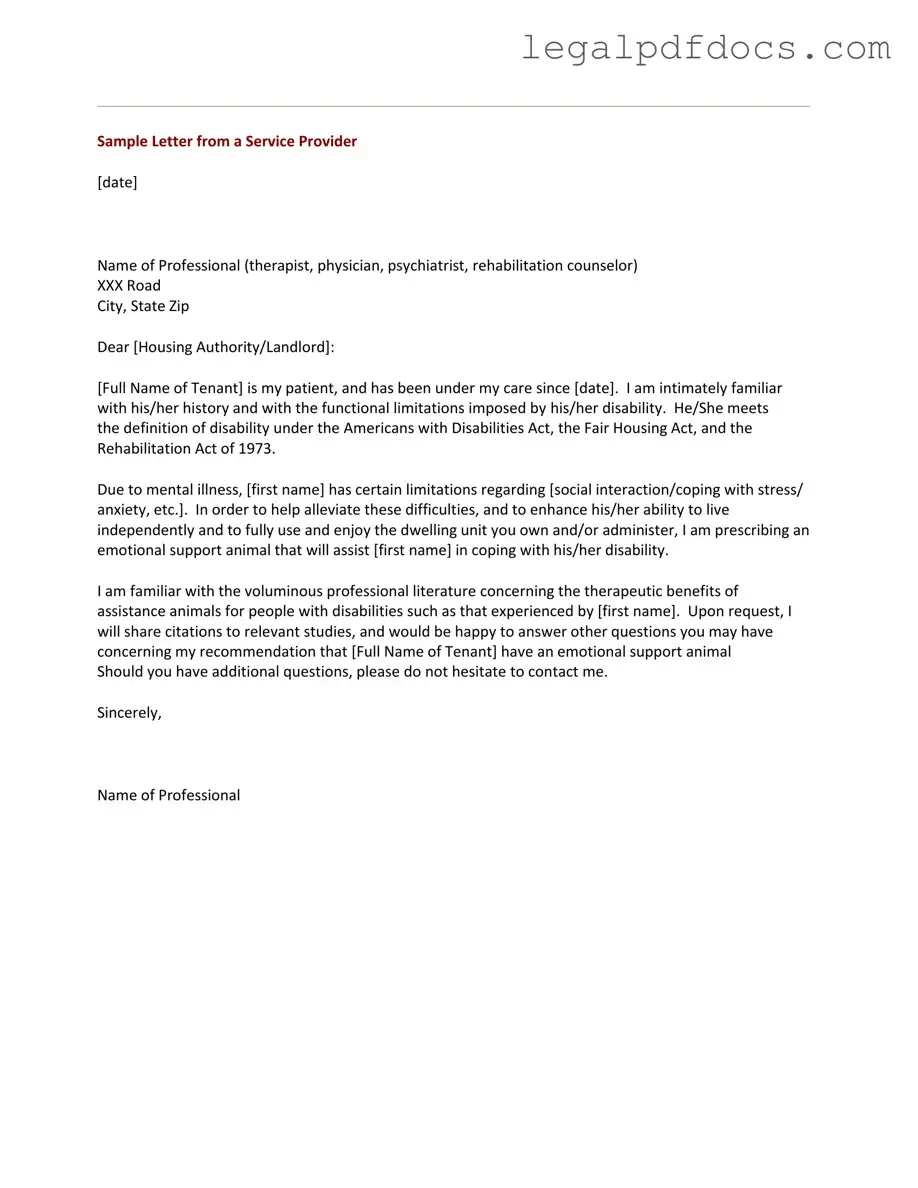Fill Out a Valid Emotional Support Animal Letter Template
The Emotional Support Animal Letter is a document provided by a licensed mental health professional, certifying that an individual requires the companionship of an emotional support animal for their mental well-being. This letter serves as a crucial tool for individuals seeking to enjoy the benefits of having an emotional support animal, particularly in housing situations and during travel. If you believe you could benefit from such support, consider filling out the form by clicking the button below.
Open Emotional Support Animal Letter Editor Here
